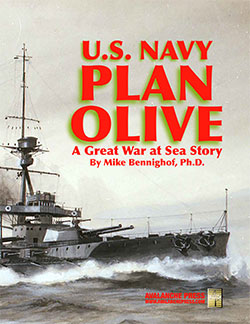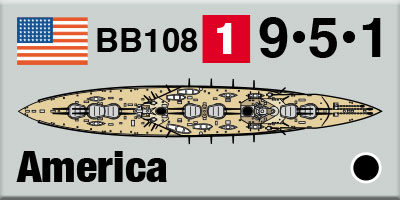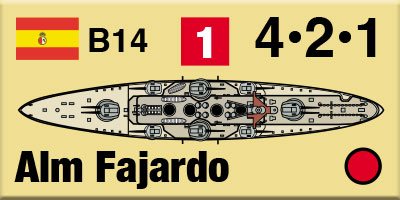U.S. Navy Plan Olive
Publisher’s Preview
by Mike Bennighof, Ph.D.
November 2023
 The United States seized Cuba, Puerto Rico and the Philippines – her own colonial empire – in 1898, at the expense of Spain. That fulfilled a long-standing goal of some American jingoists, or more accurately, represented an important first step toward even greater empire. The “disaster of 1898” sparked demand for “regeneration” in Spain, but instead the institutionalized corruption of liberal and conservative parties sent both spiraling into anarchism on the left and fascism on the right. The United States seized Cuba, Puerto Rico and the Philippines – her own colonial empire – in 1898, at the expense of Spain. That fulfilled a long-standing goal of some American jingoists, or more accurately, represented an important first step toward even greater empire. The “disaster of 1898” sparked demand for “regeneration” in Spain, but instead the institutionalized corruption of liberal and conservative parties sent both spiraling into anarchism on the left and fascism on the right.
A truly regenerated Spain would have been fired by a desire to reclaim her empire, to bring her back into the first rank of world powers. That’s the notion behind U.S. Navy Plan Olive, an expansion for Great War at Sea: Remember the Maine. The United States and Spain fight again in 1908, with the latest pre-dreadnoughts and a few proto-dreadnought types, and once more in 1916, with first-generation dreadnoughts and a few more powerful second-generation battleships. We get to play with some ships designed but never built, and flesh out the U.S. Navy with its ships that really did exist but either have never appeared in a Great War at Sea game or expansion, or in those that are now permanently out of print.
You get a book with the story of these campaigns that never happened, and of the fleets involved, and as is our way, the story told through the scenarios – 36 of them, covering two different campaigns.
The Spanish fleet is mostly British-inspired, but as with other alternative histories we went with alternative designs for the most part, the ones that weren’t chosen (like the centerline version of Neptune, the Spanish Neptuno, down below). As in 1898, the Spanish depend more heavily on large, well-armed cruisers than do the Americans, who have built a battle line of powerful dreadnoughts.

The American force includes some new ships that didn’t actually exist, like the “small battleship” design and the oft-sold dreadnought Agincourt in American colors. The American vessels are a mixture of ships which existed, but are not present in any current Great War at Sea games, extra members of classes that really did exist, and a few ships that were designed but not chosen for construction.
We’ve never presented a full order of battle for the United States Navy, even if one counts the games now out of print. This is a chance to get more of those ships back into circulation (or into a game for the first time), like the Connecticut-class pre-dreadnoughts or the early dreadnoughts of the South Carolina class. And we get to play with some American ship designs proposed for construction but never adopted.

Spain did not immediately rebuild her fleet after 1898, and so we’ve constructed one for her based on some design studies commissioned from British shipyards, and some projections of Spanish practice seen before and after this period. As with the actual Armada, most ships are either British or Italian designs, sometimes built there, sometimes built by Spanish subsidiaries of British firms. The emphasis, as in the fleet of 1898, is on powerful cruisers that can outrun the heavy American battleships and devastate enemy commerce.
That’s less useful when you’re trying to mount an invasion of large, enemy-held islands, but sometimes you have to go to war with the fleet you have, not the one you wish you had. The Spanish still have dreadnoughts of their own, the second-generation ships they hoped to build, based on British designs considered by the Royal Navy but rejected in favor of more conservative approaches.

In the story, the Americans have seized Cuba and Puerto Rico, but the Spanish have restored their rule in Santo Domingo, and this is the putative cause of the Second Spanish-American War. The Spanish are out to expand their hold in the Caribbean with the reconquest of their colonies; the American intend to hold and expand their growing empire.
Note: Spain really did re-colonize Santo Domingo (the Dominican Republic) in the 1860’s. The venture did not end well.
The Third Spanish-American War opens in 1916, with the Spanish having made some gains in the previous conflict which the Americans intended to overturn. With the Panama Canal now a centerpiece of American commerce, a hostile foreign power cannot be tolerated in the Caribbean Basin and the U.S. Navy is charged with expelling the Spanish from the New World for good.

U.S. Navy Plan Olive (the American “Rainbow” code for Spain) lets us play some more on that wonderful Caribbean map, with bigger ships but still not many airplanes. It’s a battleship game, which is what Great War at Sea should be. This is a stand-alone game: you’ll need Remember the Maine (and only Remember the Maine) to play. It’s not part of a broader story-arc, but is a self-contained adventure in alternative history.
You get 160 pieces: 120 of those are double-sized ship pieces (like the ones all over this page) and the rest are standard square pieces (small warships and the handful of early seaplanes; the markers you’ll need come from Remember the Maine). They are, of course, die-cut and silky-smooth – cut so crisply that the flip side doesn’t look like it was stomped by a mammoth.

U.S. Navy Plan Olive is one of the first top-to-bottom new Great War at Sea expansion of the Second Edition era (along with Jutland: Baltic Sea). We folded in the ships from the old Caribbean Empires downloadable expansion, with new artwork so they pop better with the new printing process.
Other than Caribbean Empires, we haven’t expanded Remember the Maine before, so this is fresh territory for story-telling. The Caribbean Basin is interesting in terms of geography, with a continental shore defining the southern, bottom edge of the map and the island chain of the Antilles framing the top and right edges (north and east). Off the western edge lies Central America. All of that makes for a defined play area, though most of the action will take place along the island chain with the gaps between the islands becoming key choke points. It makes for good scenarios, giving both sides the opportunity to hide behind the islands and disguise their intentions.
And this is a book drawing on just one core game. You’ll need Remember the Maine (and only Remember the Maine) to play. The Second Age of Great War at Sea is going to be fun.
Click here to join the Gold Club.
See your Gold Club Insider newsletter for ordering information.
Sign up for our newsletter right here. Your info will never be sold or transferred; we'll just use it to update you on new games and new offers.
Mike Bennighof is president of Avalanche Press and holds a doctorate in history from Emory University. A Fulbright Scholar and NASA Journalist in Space finalist, he has published a great many books, games and articles on historical subjects; people are saying that some of them are actually good.
He lives in Birmingham, Alabama with his wife, three children, and his new puppy. His Iron Dog, Leopold, could swim very well.
Want to keep Daily Content free of third-party ads? You can send us some love (and cash) through this link right here.
|
